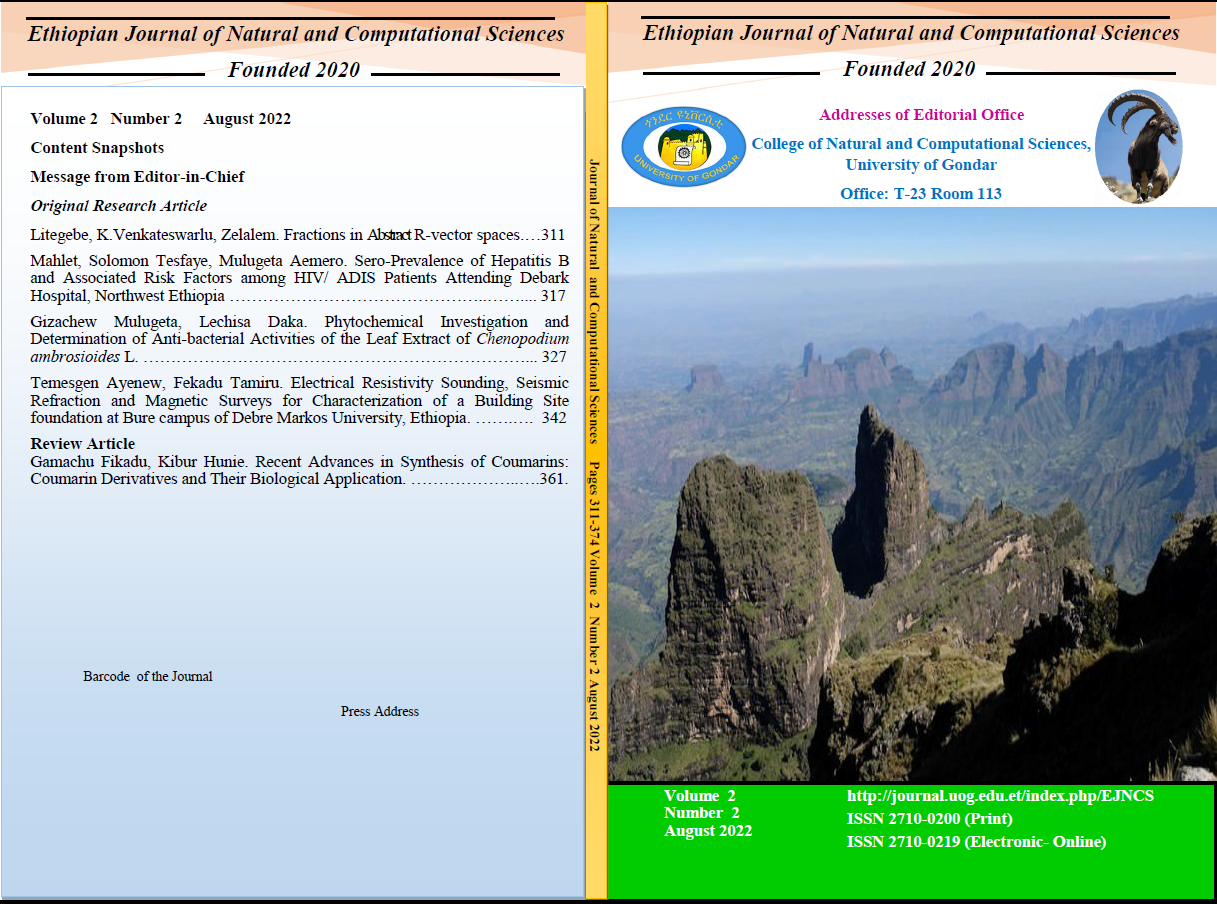Electrical Resistivity Sounding, Seismic Refraction and Magnetic Surveys for Characterization of a Building Site foundation at Bure campus of Debremarkos University, Ethiopia
Keywords:
Building site foundation, Vertical Electrical Sounding, seismic refraction, Low Velocity Layer, magnetic anomaly, slice-stacked sectionAbstract
This study aimed at evaluating the near-surface lithologies at the site selected for building the newly established Bure Campus of Debre Markose University. To characterize the foundation conditions, integrated geophysical surveys involving Vertical Electrical Sounding (VES), seismic refraction, and magnetic methods were employed. The electrical survey results show the presence of a relatively high resistivity topsoil, a low resistivity clayey soil as a second layer underlain by an intermediate resistivity bed represented by highly to moderately weathered bedrocks with intermediate resistivity, a very conductive highly fractured basalt, and at the bottom highly resistive slightly weathered basalt. The seismic refraction survey mapped top, low-velocity layers corresponding to top dry soil and clayey soil, an intermediate velocity bedrock, and relatively dense, highly fractured basalt. Magnetic anomaly maps and sliced-stack sections delineate the contact between rocks affected by different degrees of weathering while analytical signal and tilt derivative maps have mapped the weak zones resulting from subsurface structures. The correlation of the magnetic anomaly maps, geo-electric sections, and seismic refraction models were used for determining the thickness of clayey soil, the depth to the bedrock, the morphology of competent rocks, areal coverage of relatively highly weathered and fractured rocks, and for the identification of weak zones at the site. Finally, the study showed that subsurface materials at the central portions of the study area would have lower bearing capacity for building foundations than the rest of the area based on the anomaly signature mapped by the three geophysical methods.

